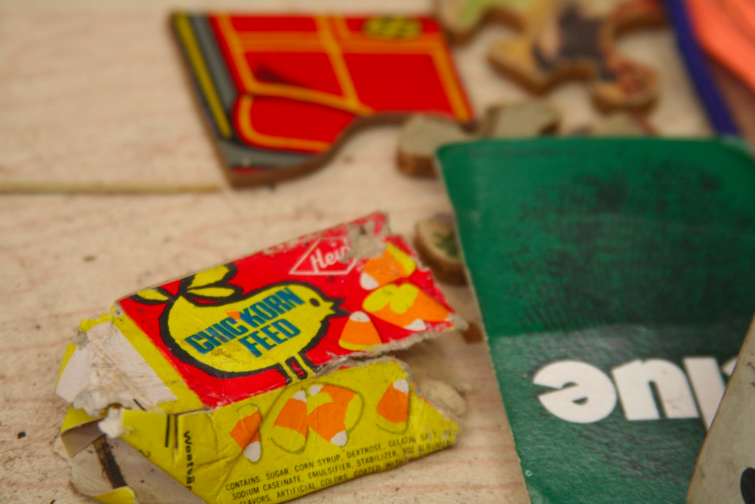Classroom Dig
About two and a half years ago, Miriam Sicherman’s fourth graders began fishing for treasure beneath the wood-plank floor of their classroom closet, at the Children’s Workshop School, on East Twelfth Street. First, they worked surgically, using pencils, chopstick style, to tweeze out objects that they spied through gaps in the boards. Then they used coat hangers as hooks. Now teachers have pried up a number of the planks, creating a full-on dig site, with strata dating back to the building’s construction, in 1913. During free periods, the kids can choose between playing dominoes, mucking around in the compost bin, and kneeling beside the opening to sift through the jumble of relics that have fallen out of generations of jacket pockets and backpacks.
They’ve unearthed a cultural fossil record spanning a century: political buttons, ticket stubs, spelling tests, wheat pennies, flash cards, candy wrappers, and a mummified pet, its species hard to discern. Some of those items are now on display at the City Reliquary, a museum in Williamsburg, cradled by cotton batting in custom-made boxes, or nestled between acid-free backing and clear film, “similar to a large-scale microscope slide,” Dave Herman, the museum’s founder, explained.
Sicherman, who is forty-five and had her dark hair pulled back in a ponytail, said that finding the artifacts has helped the students understand their place in history. “There’s nothing about famous people here,” she said. “It’s the ‘them’ of fifty or a hundred years ago.” To get the kids to appreciate the changes that have occurred in their East Village neighborhood, Sicherman has been tracking down alumni and inviting them to come visit.
One Friday, David Levy, a sixty-seven-year-old professor at the University of Washington’s Information School, sat on a small plastic chair and told the class stories about growing up in Stuyvesant Town and attending the school in the early sixties, when it was called P.S. 61. Levy fiddled with his tortoiseshell glasses and showed a photo from his fourth-grade class play, Gilbert and Sullivan’s “Iolanthe”; the picture usually hangs in the downtown apartment of his mother, who is a hundred and one.
Levy has written a scholarly book about the value of ephemera, “Scrolling Forward,” so he was eager to help the students find meaning in the stuff found beneath the floorboards. The kids’ questions were more prosaic.
“Did you have break time and yoga?” one girl asked.
“We didn’t even know what yoga was,” Levy answered.
